Site Information: Located in the Concordia neighborhood of NE Portland, Ric’s site conditions range from full sun to shade, dry to moist.
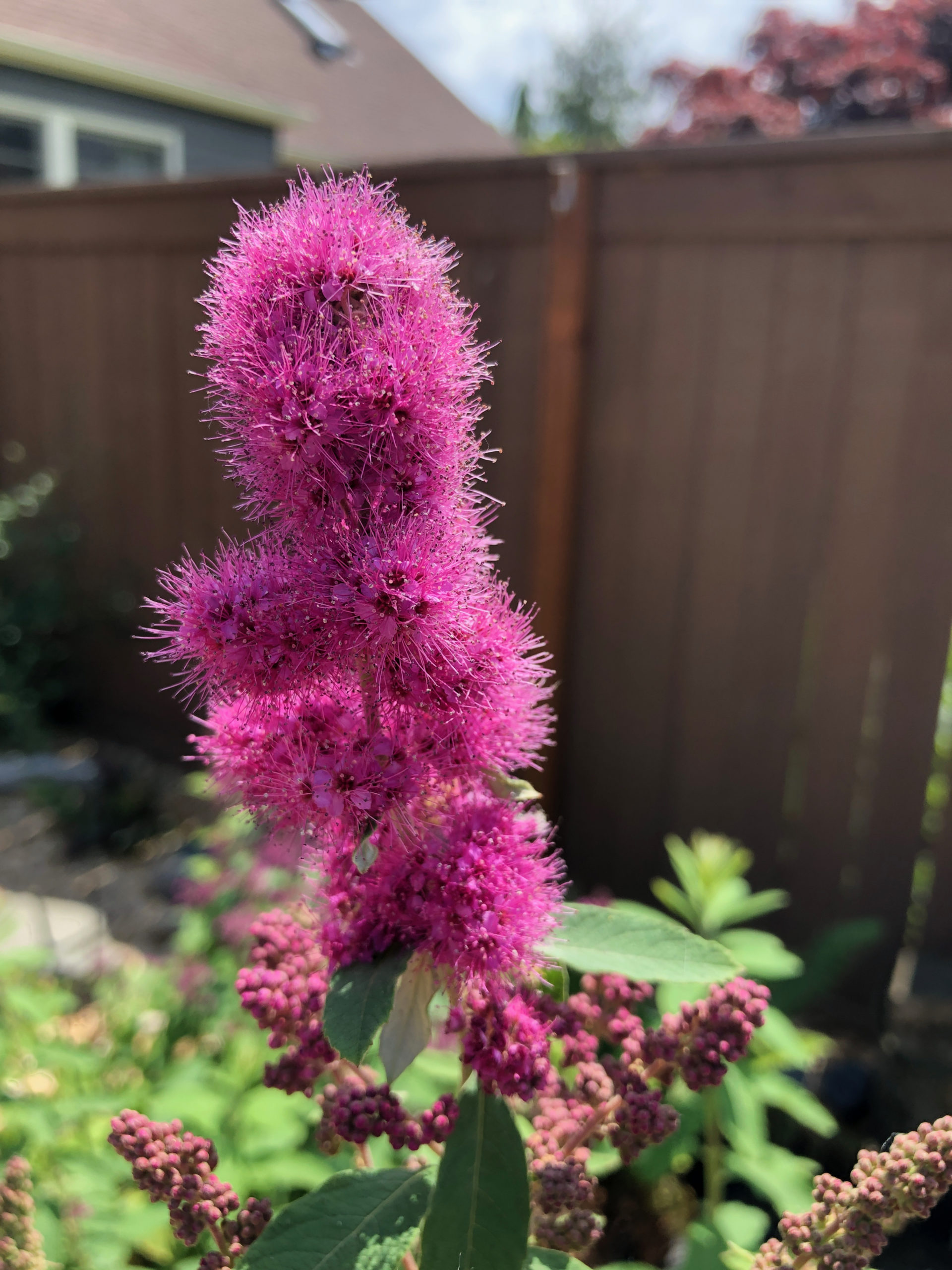
What inspired you to enroll in the Backyard Habitat Certification Program?
We were aware of the program when we decided to remove our lawn and plant with natives and the Backyard Habitat Program was a great source of ideas and inspiration.
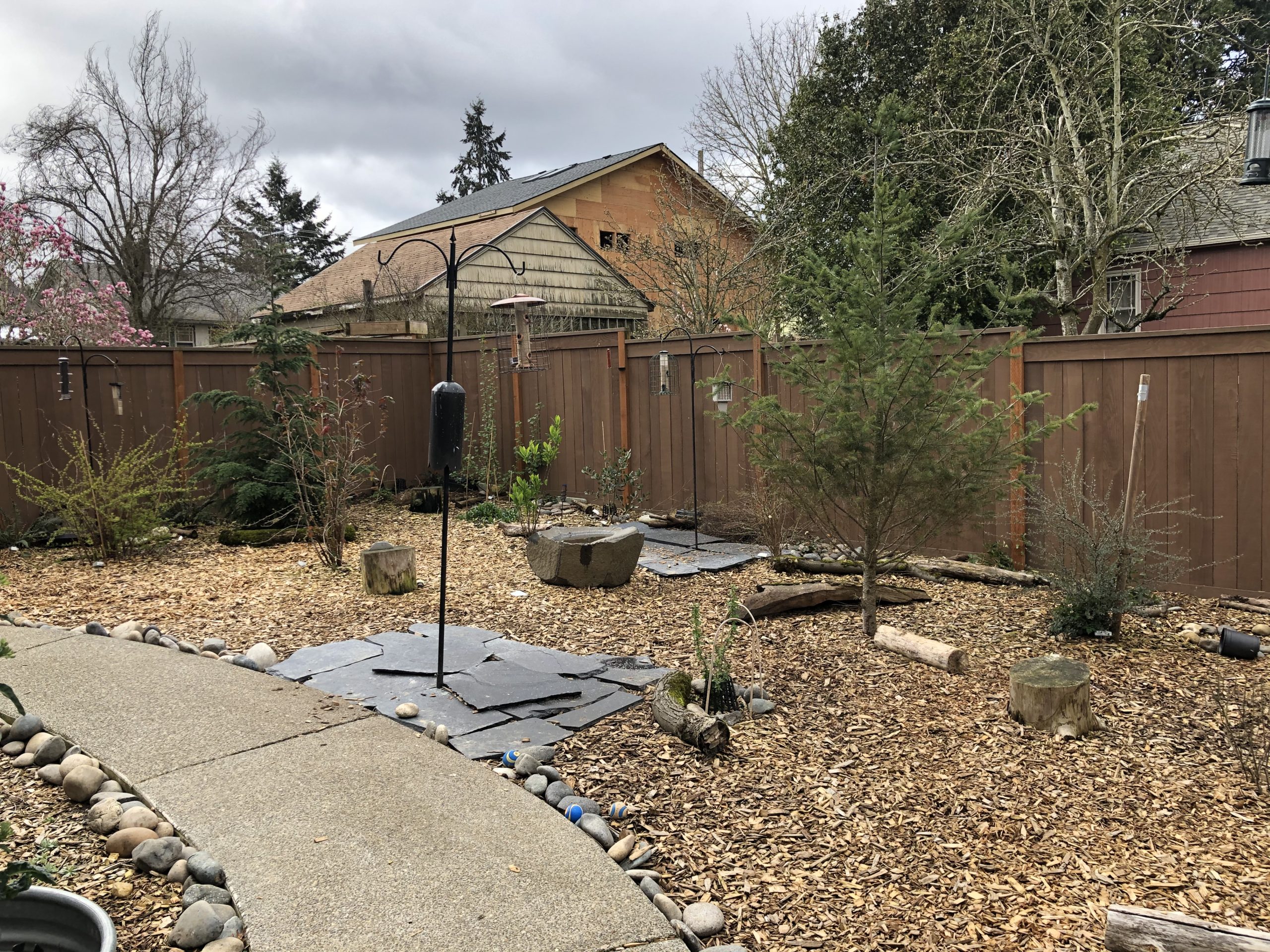
How would you describe your habitat?
We have almost all Oregon natives and focused on species that would provide good habitat and food for birds and pollinators. We have several feeders, a bird bath, and bird house. The yard is insecticide and herbicide free.

What are your top three favorite native plants and why do you love them?
Douglas fir because they can touch the sky and look beautiful while doing it, red flowering currant for the awesome floral display and benefits to hummingbirds, and Oregon Oxalis because it just makes me happy.
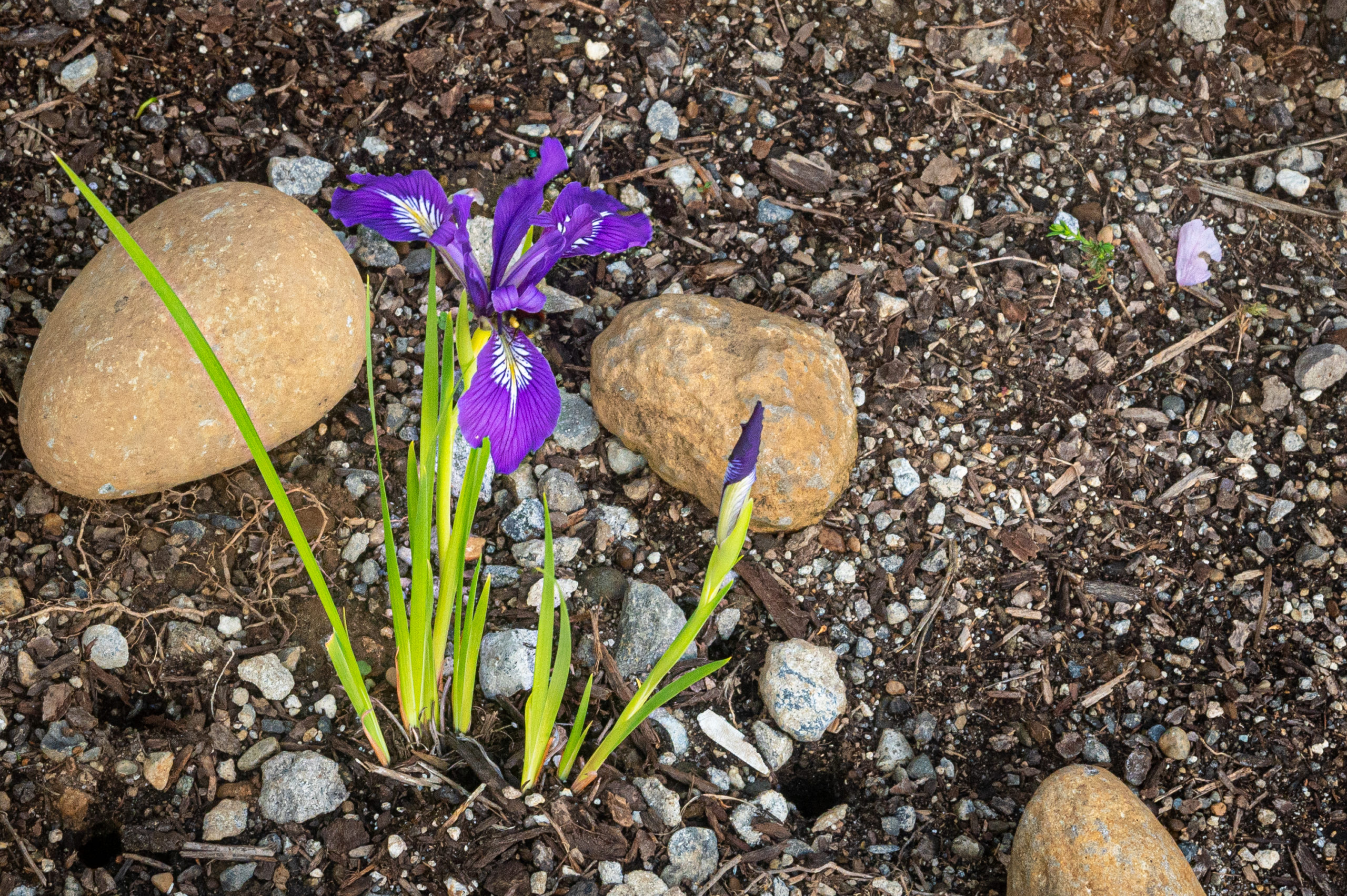
What changes have you observed as a result of creating habitat?
Squirrels, birds, and native bees are now frequent visitors to our yard. Digging into the cedar chips reveals worms, insects, spiders, fungus, and other life. Our little ecosystem is just over a year old, but it’s doing well.
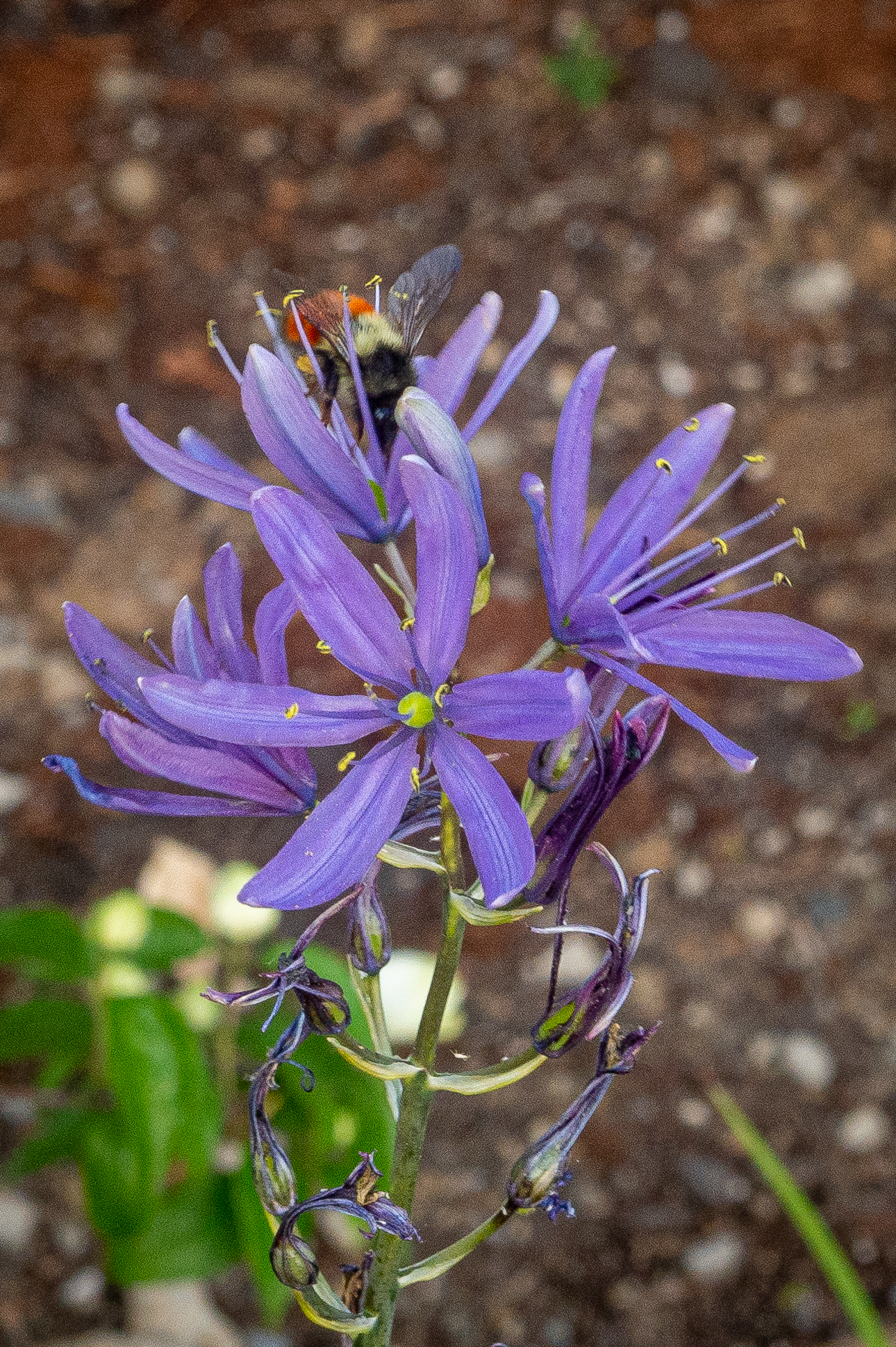
What were the two most significant challenges you encountered while creating habitat, and how did you address them?
Getting rid of the grass was the most labor intensive and lengthy process. Our yard is relatively small which mitigated any challenges. It’s been mostly fun, but we’re getting a bit impatient watching our trees grow.

What resources did you find especially helpful?
Meeting with the Backyard Habitat Technician was very helpful, as were the resources she made available to us. Useful books included PLANTS OF THE PACIFIC NORTHWEST COAST by Polar & Mackinnon and REAL GARDENS GROW NATIVES by Stark.
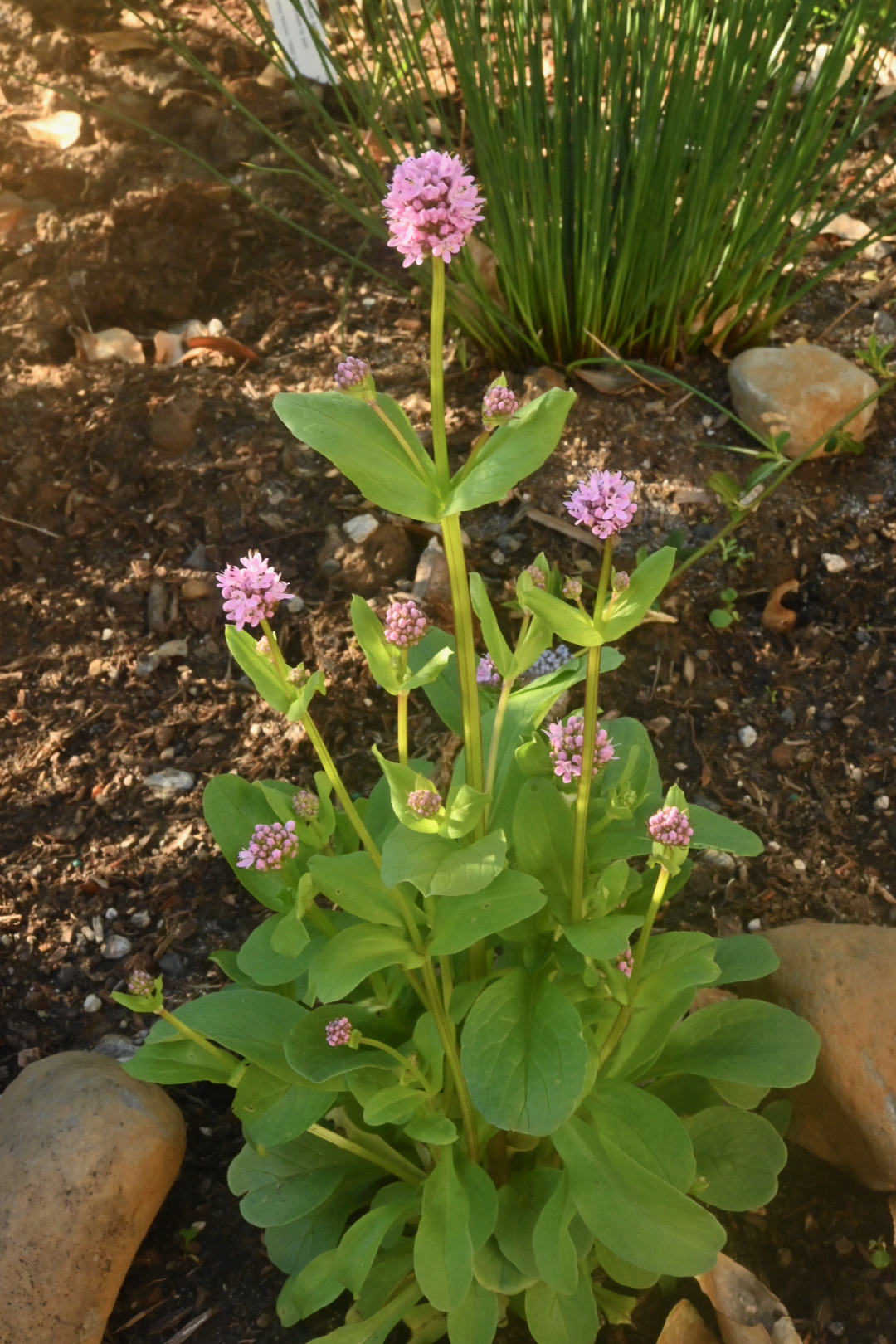
How do you enjoy your Backyard Habitat throughout the different seasons? What are its highlights in each season?
Spring is wonderful when the lupine, Douglas aster, hedgenettle, Camas, yarrow, and others begin to emerge from their winter slumber. Our blooming period from mid spring to mid autumn is fun for the pollinators that visit and it’s interesting to see which plants the native and European bees choose to visit. For example, the European honeybees love the Douglas aster and the native bumblebees really go for the blue blossom and Camas. At some point in the summer three young squirrels seemed to make our yard their playground and gave us lots of enjoyment, I saw one of them just a minute ago (still skinnier than mom and dad). Winter brings the dark-eyed Juncos and occasional invasions of hoards of European Starlings.
What part of your backyard habitat are you most proud of?
Our Western Hemlock, Douglas fir, and Subalpine fir. May they provide habitat and shade long after we are gone.
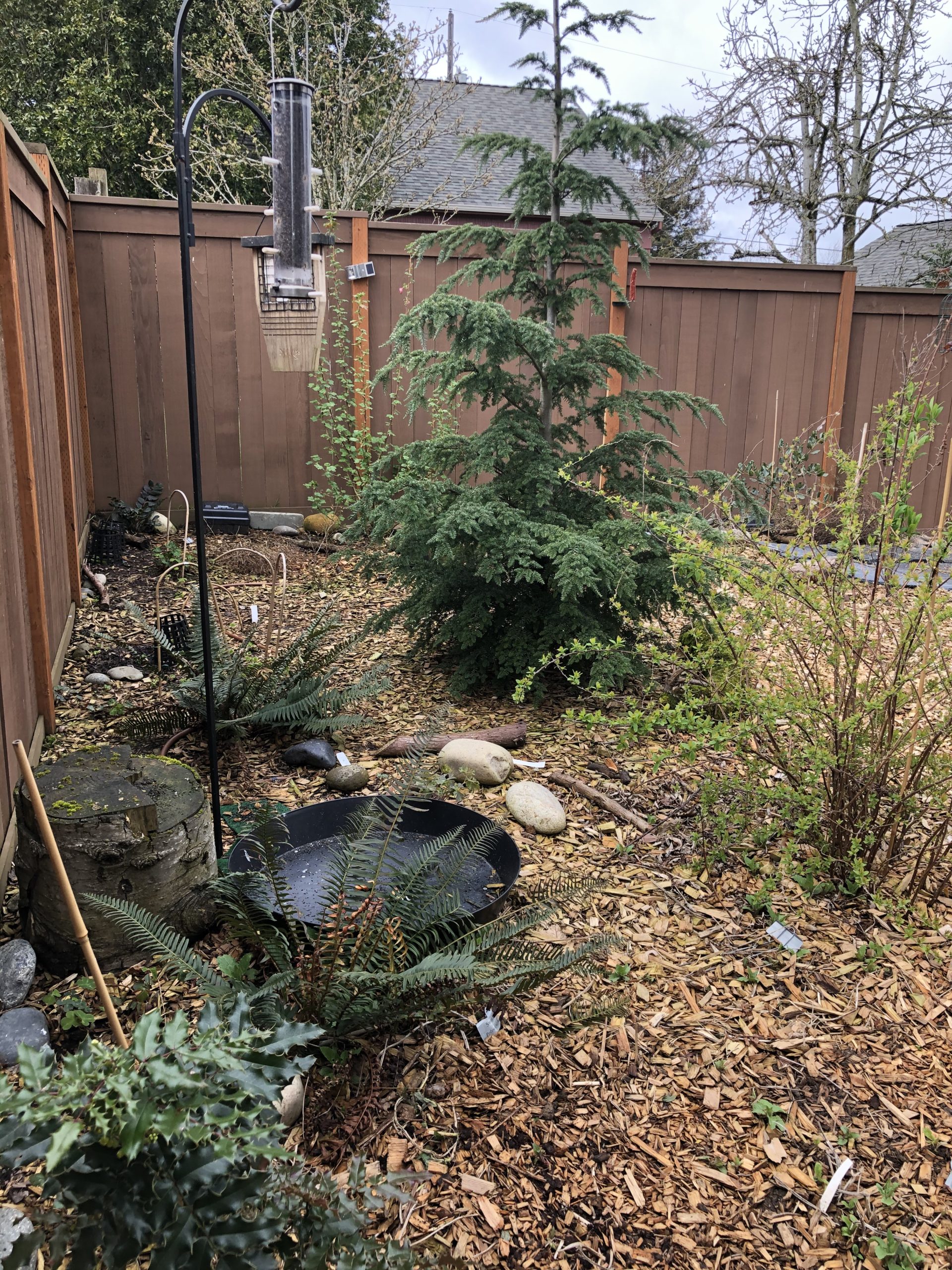
Is there anything else you’d like to add about your journey?
Our journey is just beginning since we removed everything that the developer seemed to think belonged here. A Manzanita and Ceanothus look like they might not make it, maybe the soil is not well-draining underneath them, maybe not enough sun. It’s sad to lose some plants, but we will learn and adjust. It’s been great having an interesting outdoor space to shelter in place in during the pandemic.